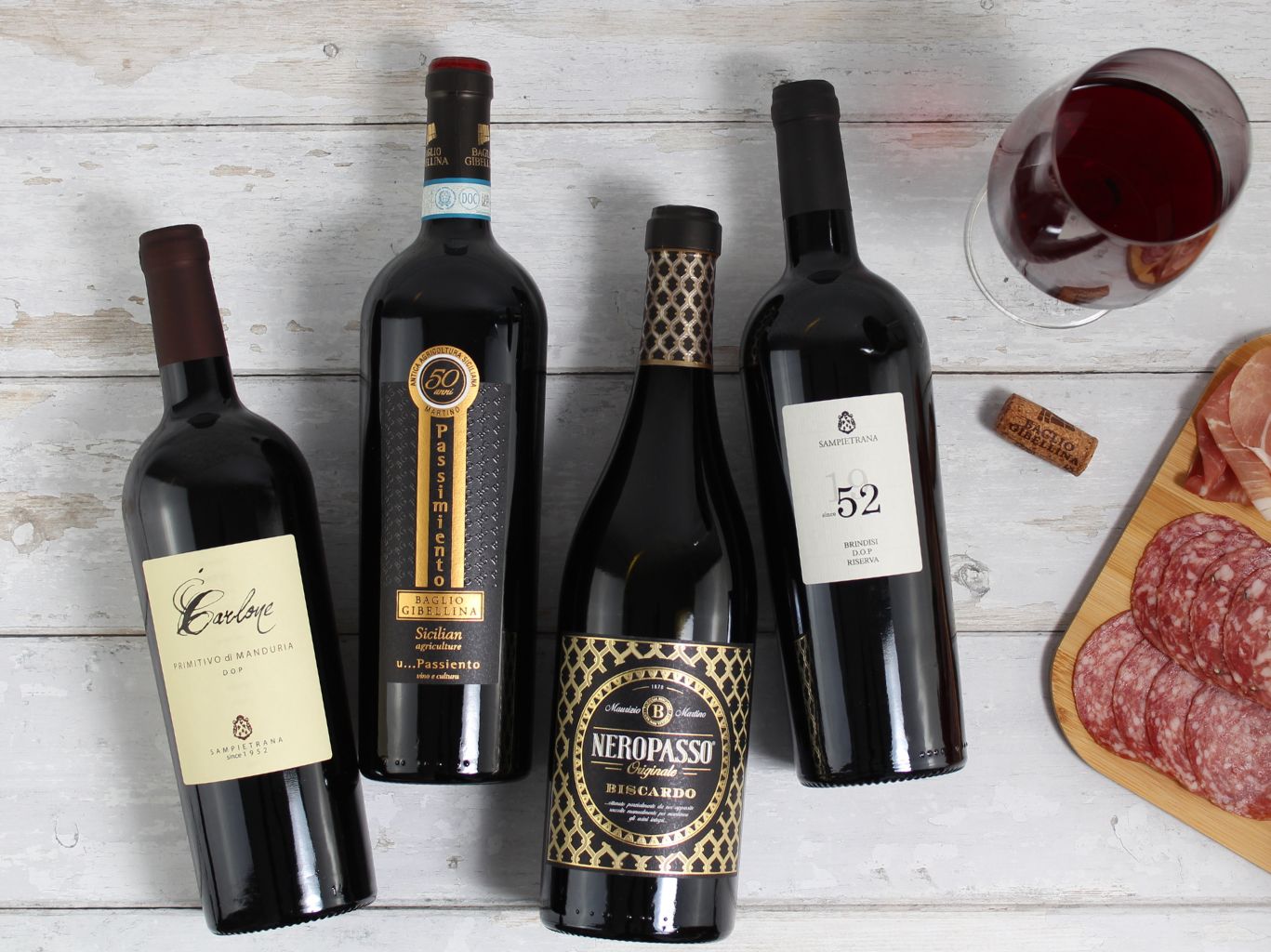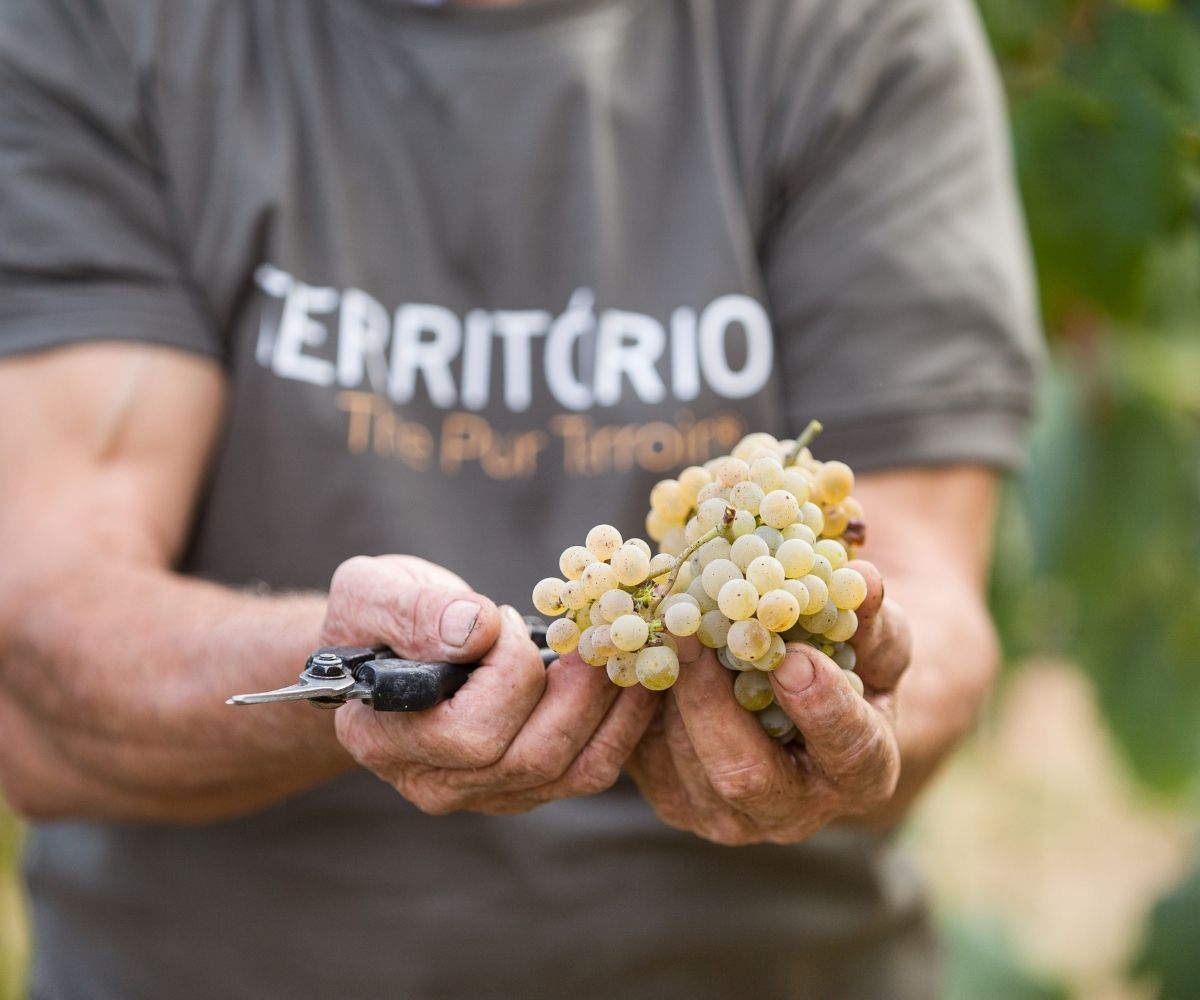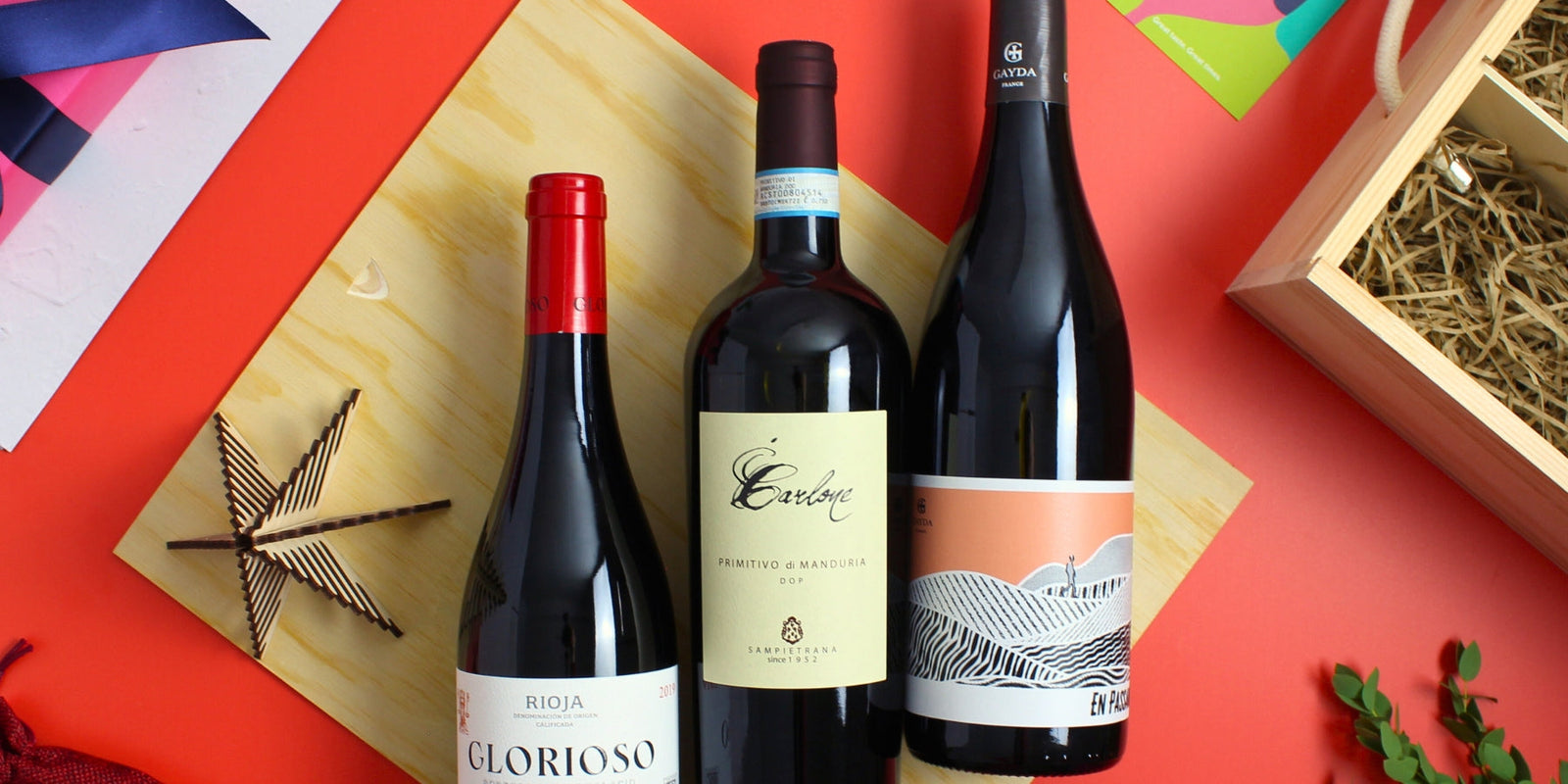The Beginner's Guide to Red Wine: Everything You Need to Know
If you're new to the world of red wine, it can all feel a bit overwhelming - grape varieties, tannins, ageing, decanting, and all those food pairing rules. But don't worry - this down-to-earth guide will give you a proper introduction to red wine, helping you understand the basics, choose the right bottle, and enjoy it with food like a pro.

What Is Red Wine and How Is It Made?
Red wine is made from dark-skinned grapes - often called black grapes - and unlike white wine, it’s fermented with the grape skins still in the mix. This is what gives red wine its colour, structure, and distinctive flavours. During fermentation, the grape skins release tannins, pigments (called anthocyanins), and other natural compounds that make red wine so interesting.

The winemaking process generally follows these steps:
-
1. Harvesting
Red or black grapes are picked at peak ripeness - by hand or machine - when sugar, acid, and tannin levels are just right. -
2. Crushing & Maceration
Grapes are destemmed and lightly crushed to form the "must" (juice, skins, seeds). Skin contact begins immediately, essential for red wine's colour and structure. -
3. Fermentation
Yeast transforms sugars into alcohol, with skins left in the mix for tannins and flavour. The floating skin "cap" is regularly mixed to enhance extraction. -
4. Pressing & Malolactic Fermentation
After fermentation, wine is pressed off the solids. Most reds undergo malolactic fermentation, converting sharp acids into softer ones for a smoother taste. -
5. Aging & Bottling
Wine matures in oak barrels or tanks to develop complexity. It’s then clarified, stabilised, and bottled - some wines are ready quickly, others improve with age.
This process can vary depending on the winemaker’s style, the grape variety, and the region - but the basic principle is the same. The result? A wide range of red wines, each with its own personality. Explore our full red wine collection to taste the variety for yourself.

Popular Types of Red Wine Explained
There are hundreds of red grape varieties, but here are the most popular red wines you’ll likely come across. Each has its own style and flavour profile, so there’s something to suit everyone’s taste.
- Pinot Noir: Light-bodied, low in tannin, with red berry flavours like cherry and raspberry. Try our Domaine Gayda, Sphere Pinot Noir.
- Merlot: Soft, juicy, and smooth with plum, black cherry, and chocolate notes. Very easy-drinking and food-friendly. A great red wine for beginners. Try our Peculiar Mr Pat Merlot.
- Cabernet Sauvignon: Full-bodied with bold tannins and flavours of blackcurrant, cedar, and spice. Often aged in oak and made for ageing. A great example is The Winery of Good Hope, Oceanside Cabernet Merlot.
- Shiraz / Syrah: Rich, spicy, and full of dark fruit. Great with grilled meat and big flavours. For something bold, try Samurai Shiraz.
- Grenache: Medium-bodied, juicy and soft, with flavours of red fruit and a hint of white pepper. Ideal for casual sipping or food pairing. We recommend Brotte, Esprit Cotes du Rhone Rouge.
- Malbec: Smooth and bold with notes of blackberry, plum, and cocoa. Originally from France, now a star in Argentina. Try Kaiken Malbec Clasico.
Learning your grape varieties is a brilliant place to start when choosing a red wine. Try a few to see which styles you naturally enjoy.

How to Choose a Red Wine for Beginners
If you're just getting into red wine, start with lighter, fruit-forward options that aren't too heavy on the tannins. Wines like Pinot Noir, Merlot, or Grenache are perfect. They're easy-drinking, go well with a range of foods, and help you get used to the different flavours without overwhelming your palate.
Once you're comfortable with those, you can explore more structured and complex wines like Cabernet Sauvignon or Shiraz. You don’t need to spend loads — there are plenty of excellent red wines under £15 that offer great value and taste. Browse red wines for beginners here.

Red Wine and Food Pairing Tips
Pairing red wine with food isn’t just for sommeliers — it’s an easy way to enhance flavours and elevate your meal. Here are the basics:
Key Principles
-
Match weight with weight
Light reds = lighter dishes. Bold reds = hearty food.
Think Pinot Noir with salmon, Malbec with steak. -
Tame tannins with fat
Bold reds with high tannins (like Cabernet) love rich, fatty meats — they balance each other beautifully. -
Acidity wins
A wine should be slightly more acidic than the dish — this keeps flavours fresh and lively. -
Sauce matters more than meat
Always pair to the sauce — it’s where most of the flavour lives. -
Complement or contrast
Earthy reds with mushrooms? That’s a congruent match. Fruity reds cutting through gamey meats? That’s a complementary contrast.
What Goes With What? Quick Pairing Table
| 🍷 Grape Variety | 🍽️ Ideal Food Pairings |
|---|---|
| Pinot Noir | Salmon, roast chicken, mushrooms, leafy greens |
| Gamay | Grilled vegetables, sardines, spicy sausages |
| Merlot | Roast turkey, ribs, plum sauce, milk chocolate |
| Sangiovese | Pasta with meat sauce, pepperoni pizza |
| Zinfandel | Roast venison, sautéed mushrooms |
| Tempranillo | Roast lamb, herby vegetables, tapas dishes |
| Grenache | Game meats, cassoulet, braised venison |
| Syrah / Shiraz | Steak, roast pork, peppercorn sauce |
| Cabernet Sauvignon | Beef fillet, roast lamb, aged cheddar |
| Malbec | Barbecue dishes, grilled red meats |
Extra Tips
-
Light reds with veg: Pinot Noir or Gamay can surprise you with veggie dishes.
-
Watch the spice: Spicy foods can clash with tannins — go for softer reds or chilled whites.
-
Sweetness pairs with dessert: Save your sweeter reds for chocolate or fruit puddings.
-
Sparkling is a secret weapon: Try it with fried or salty dishes — it works wonders!
FAQs About Red Wine
What temperature should you serve red wine?
Red wine is best served slightly cooler than typical room temperature — around 15–20°C. Lighter reds can be chilled for 30 minutes before serving. Too warm and the alcohol can dominate the flavour; too cold and it might taste flat.
Does red wine offer any health benefits?
In moderation, red wine contains antioxidants such as resveratrol, which may offer heart health and anti-inflammatory benefits. But remember, these effects only apply with moderate drinking — roughly one small glass per day — and shouldn’t be a reason to start drinking if you don’t already.
What does the vintage year mean?
The vintage on a red wine label refers to the year the grapes were harvested. Wine from the same grape variety can taste different from year to year depending on the weather during the growing season.
Do I need to decant red wine?
Decanting can help younger red wines open up and soften. It can also separate sediment in older bottles. If you're short on time, swirling your glass works too — it's a quick way to get oxygen into the wine and bring out the aromas.
Why do some red wines have sediment?
Sediment forms naturally as red wines age, made up of tannins and colour pigments settling over time. It’s harmless — just stand the bottle upright before serving or use a decanter if you’d rather avoid it in your glass.
What do 'legs' or 'tears' in red wine mean?
These are the streaks that form on the inside of a wine glass after swirling. They're caused by alcohol evaporation and surface tension — and while they can suggest alcohol or sugar levels, they don’t indicate quality.
Red Wine Made Simple
Red wine doesn’t have to be complicated. Whether you’re sipping a silky Pinot Noir or a bold Aussie Shiraz, understanding the basics helps you enjoy every glass that little bit more. Try different styles, pair them with your favourite foods, and trust your own taste — that’s what makes wine so enjoyable.
Want to keep learning? Sign up for our newsletter for beginner tips, food pairing guides, and our latest red wine arrivals. Or explore our red wine collection to discover your next favourite bottle.







Leave a comment (all fields required)